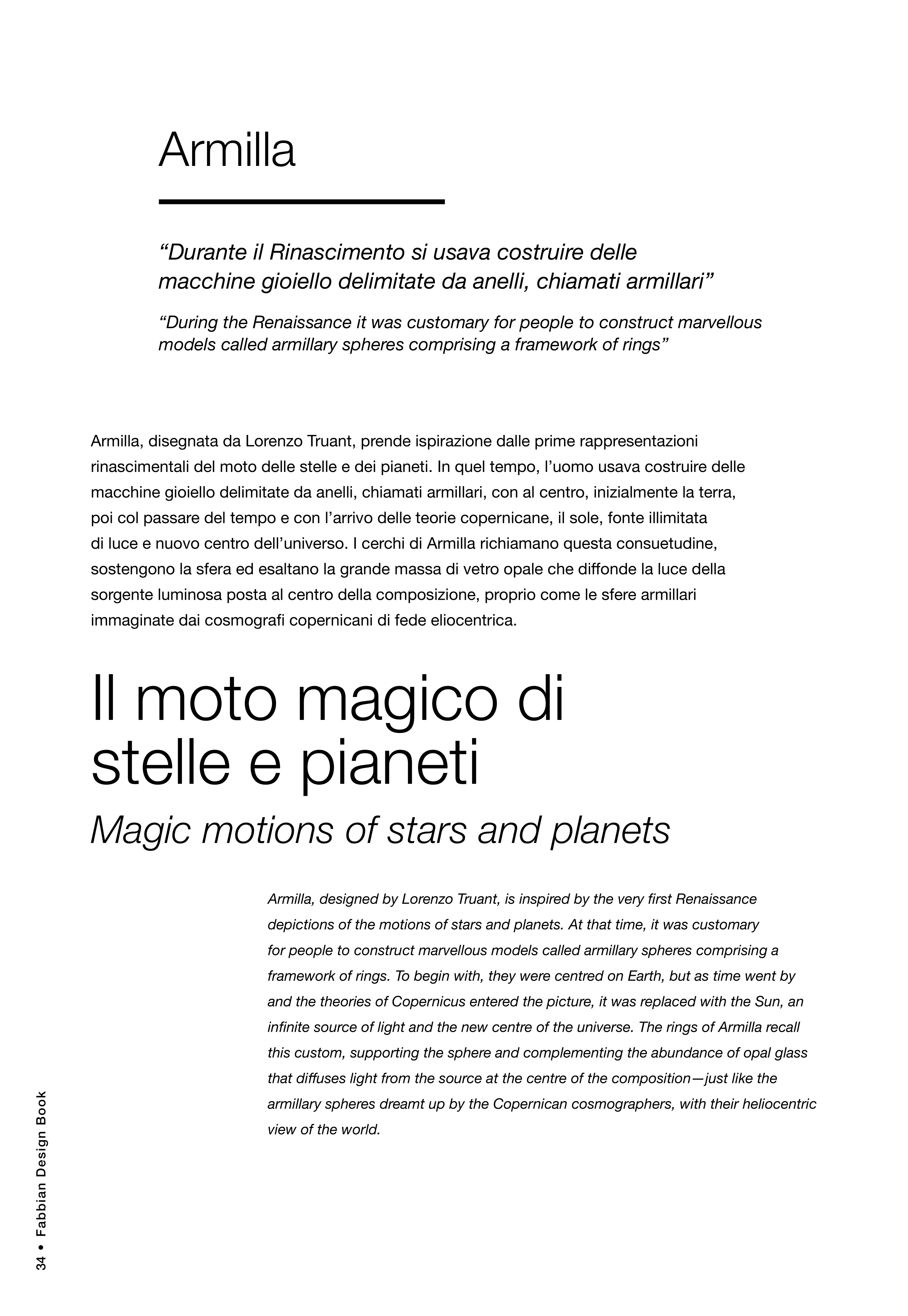Armilla, disegnata da Lorenzo Truant, prende ispirazione dalle prime rappresentazioni
rinascimentali del moto delle stelle e dei pianeti. In quel tempo, l’uomo usava costruire delle
macchine gioiello delimitate da anelli, chiamati armillari, con al centro, inizialmente la terra,
poi col passare del tempo e con l’arrivo delle teorie copernicane, il sole, fonte illimitata
di luce e nuovo centro dell’universo. I cerchi di Armilla richiamano questa consuetudine,
sostengono la sfera ed esaltano la grande massa di vetro opale che diffonde la luce della
sorgente luminosa posta al centro della composizione, proprio come le sfere armillari
immaginate dai cosmografi copernicani di fede eliocentrica.
Armilla, designed by Lorenzo Truant, is inspired by the very first Renaissance
depictions of the motions of stars and planets. At that time, it was customary
for people to construct marvellous models called armillary spheres comprising a
framework of rings. To begin with, they were centred on Earth, but as time went by
and the theories of Copernicus entered the picture, it was replaced with the Sun, an
infinite source of light and the new centre of the universe. The rings of Armilla recall
this custom, supporting the sphere and complementing the abundance of opal glass
that diffuses light from the source at the centre of the composition—just like the
armillary spheres dreamt up by the Copernican cosmographers, with their heliocentric
view of the world.
“Durante il Rinascimento si usava costruire delle
macchine gioiello delimitate da anelli, chiamati armillari”
Il moto magico di
stelle e pianeti
Magic motions of stars and planets
Armilla
“During the Renaissance it was customary for people to construct marvellous
models called armillary spheres comprising a framework of rings”
34 • Fabbian Design Book


